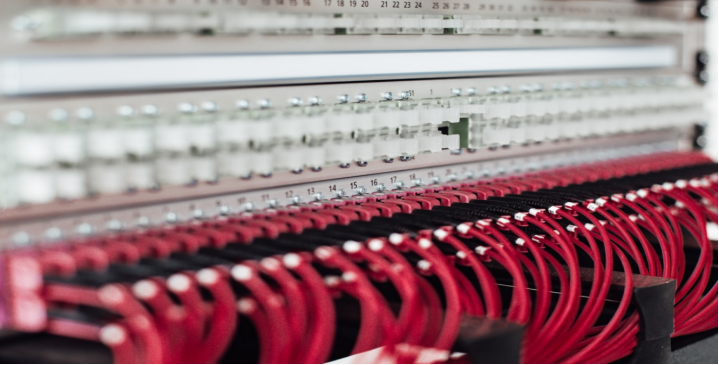
Dark Fiber, also known as unused fiber or black fiber, is a type of laid unused fiber. It is commonly used for telecommunications and network communication, which are thousands of miles of unused dark fiber cables around the world. Although not yet, it is "dark" because it does not transmit light pulses through it. In ordinary fiber optic cables, optical pulses transmit information, but the advantages of these cables must be utilized.

Today, the term "Dark Fiber" is used to discuss the sustained growth and popularity of renting fiber optic cables from network providers/service providers, or separating them from traditional operators in the infrastructure of fiber optic installation/infrastructure. Even if dark fiber is used by optical fibers rather than by cable owners, even if it is called dark fiber.
After installing fiber optic cables, many companies overestimate the total amount of consumables and cables required for execution. The reason for overestimation is to ensure that the company can prevent excessive growth in its dark fiber network. The advancement of preventive measures and data encapsulation has given many fiber optic networks irrelevant space. This additional space provides an opportunity to play a role by extending to dark fiber networks.
What is Dark Fiber used for & how?
There are several methods to set up a dark fiber network. Point to point or peer-to-peer configuration is the most common method for installing and setting up these networks. The dense wavelength division of multiplexing (DWDM) has always been an important factor in the development and improvement of dark fiber. When many different data signals are transmitted simultaneously through the same optical fiber, DWDM occurs.
Data signals are transmitted simultaneously, but in order to separate them, they are all transmitted on unique and independent wavelengths. Dense wavelengths are a great way to increase bandwidth and allow for additional data to be transmitted over fiber. Additionally, a single fiber optic cable can be transformed into multiple virtual fibers. This technology results in high-quality Internet performance, a strong and secure network, and lightning-fast speeds.

Dark Fiber can be provided and used by individuals. However, due to the higher demand for the Internet, enterprises and other organizations are more likely to get the maximum benefit from the dark fiber bandwidth. Black fiber optic also ensures that the company has almost complete control over its network infrastructure. Government agencies, schools, e-commerce, and retail companies are among the many people who can benefit from dark fiber. Due to the transmission of a large amount of sensitive data, these specific organizations need fast and secure Internet functions.
Dark Fiber Networks have high capacity and can achieve excellent signal strength. As mentioned earlier, by using optical pulses to transmit data through cables, you can find it underground. The dark fiber network is separated from the main network, and the main network is controlled by the client rather than the network provider. Some interesting uses of dark fibers include earthquake research currently occurring in California. They are also used to monitor the Arctic permafrost in Alaska. It is not only used for commercial purposes, but can also be installed in the ocean and underground.

How to use dark fibers in the network architecture?
There are several different setups for Dark Fiber. Two main configurations are very popular, point configuration and multipoint configuration. They usually install more networks instead of adding new fiber optic capacitors to the existing network, but more equipment can be installed in the future to use dark fiber. When installing additional cables, network service providers enable companies to work more efficiently.

What are the benefits of dark fibers?

-Scalability: When an organization wants to scale, they may not have the bandwidth to effectively run their business. The process of requesting more bandwidth from an ISP may take several weeks, and in the long run, the cost will be higher. By investing in dark fiber, the company can increase bandwidth capacity and upgrade to fiber optic power equipment. The organization will be able to access almost unlimited bandwidth without the additional cost or delay of handling ISPs.
-Network latency: You need to purchase and install your own transmission equipment to run a dark fiber network. This allows you to control the latency of the network. If the connection points are close enough, you can save the transmission equipment and connect the points directly through a router or network hub. Low network latency is critical for companies that rely on different peer-to-peer communication portals. It is also critical for large data centers that require fast communication. In addition, the speed of dark fiber is controlled by the lessee, so companies using this technology do not have to worry about sharing bandwidth with other customers.
-Enhanced security: Dark fiber networks are privately owned and operated by the lease owner, so entities cannot track or record the data and information transmitted through the fiber. This is especially important for businesses and organizations that require continuous transmission over a secure network, as well as research, defense, and financial services.
-Reliability: Operators of Dark Fiber Networks can perform necessary maintenance and upkeep. Therefore, dark fiber networks provide reliable, flexible, and high-speed bandwidth services that ISPs cannot match. When there is a problem with the network, you must send a request to the ISP to identify and resolve the issue. This means you may have to wait for a while as they are processing other requests. However, using a dark fiber network, you can control the system and solve problems on your own without contacting an ISP to dispatch technical personnel. If any problems arise, you can also minimize the shutdown time, which is crucial for companies looking to reduce costs.
-Addered: although the cost of dark fiber is high, operators using dark fiber networks can rest assured that the cost of operating the network will be beneficial. Compared to traditional ISPs, enterprises will face continuous improvement in their current service level. This will make the company's costs higher than the cost of dark fiber networks. If your organization has a lot of data to move, setting up your own dark fiber network will save more money than paying a lot of fees for Internet providers.
-Cope: Dark Fiber provides control for organizations, enabling them to customize the network and use their own devices to run various protocols on a single optical fiber chain, such as Internet Protocol (IP), Multi Protocol Label Switching (MPLS) or Ethernet. For example, organizations can operate 10 bit per second (GBPS) Ethernet or multiple DWDMs (dense wavelength division multiplexing) by connecting appropriate hardware at both ends of the service and using dark fiber.
Conclusion
Dark Fiber Networks can provide faster, more reliable, low latency, and maximum flexibility, completely changing high-speed networks. By using installed and unused optical cables, dark fiber providers can customize their networks to meet their specific needs and provide high-speed connections at a lower cost.
As the demand for high-speed connections continues to grow, dark fiber speed networks will become increasingly important. They are very suitable for meeting the needs of real-time data transmission, Internet of Things, and 5G technology. As more and more companies and organizations realize our advantages, we can look forward to seeing the use and innovation in this field.
Contact
If you want to know more details, please contact sales@veivot.com.





 INQUIRY
INQUIRY